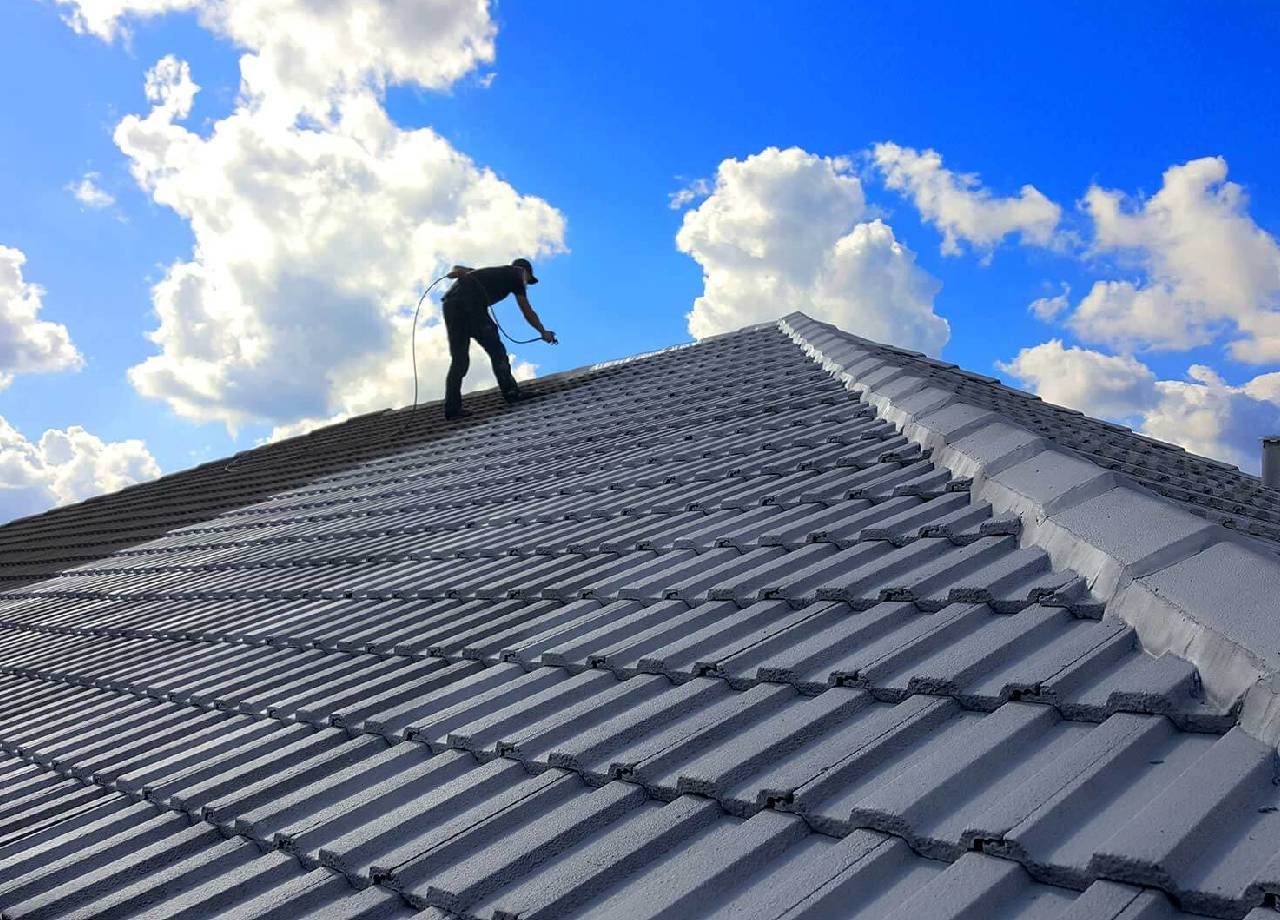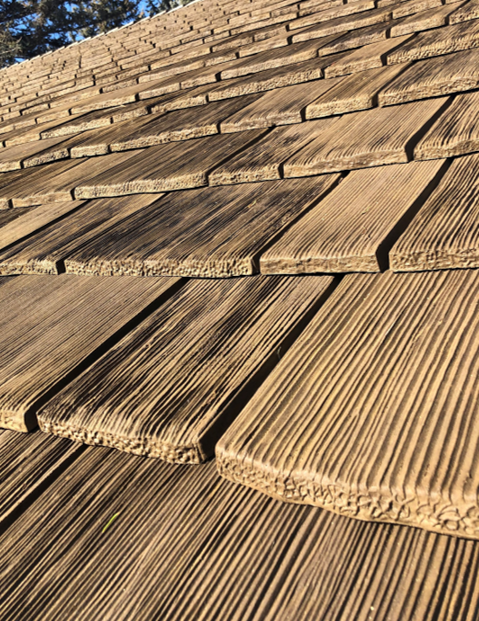Typical Concerns That Can Impact Your Roof Covering and Just How to Address Them
Roofing issues can arise from different variables, influencing the integrity of a home. roofing pleasant hill mo. Typical issues include leakages, missing out on tiles, and bad ventilation. Property owners commonly ignore these issues until they escalate, bring about even more significant damage. Recognizing the remedies and causes is vital for maintaining a roof's long life. What actions can be taken to protect against these problems from ending up being costly repairs?
Roof covering Leaks and Their Reasons
Although roofing system leaks can arise from different sources, understanding their primary causes is essential for efficient prevention and repair. One usual contributor is the build-up of particles in valleys and gutters, which can block water flow and lead to merging. In addition, improper flashing around vents, skylights, and chimneys can develop weak factors, allowing water to infiltrate. Aging roof covering materials likewise play a significant role; as roofs age, they might end up being fragile and lose their effectiveness at driving away wetness. Ice dams can create throughout winter months, causing water to back up under roof shingles and leak right into the home. Inadequate air flow can lead to moisture build-up in the attic room, which might endanger the roofing structure over time. Identifying these causes can help homeowners take proactive measures to keep their roofs and protect against pricey repair services.
Missing or Harmed Roof Shingles
Lots of house owners face issues with missing out on or harmed roof shingles, which can considerably jeopardize the integrity of a roof covering. Shingles can come to be dislodged or wear away because of rough weather, age, or inadequate installment. This damage commonly brings about leaks, raised power expenses, and potential structural issues otherwise dealt with promptly.To remedy this problem, home owners must conduct normal examinations of their roof coverings, specifically after extreme tornados. Identifying missing out on or damaged shingles early can prevent further difficulties. Changing them immediately is critical if tiles are located to be missing. For minor damages, such as splits or curling, using roof cement can provide a temporary fix.In cases of widespread tile damages, a total roofing system substitute may be needed. Consulting with a professional roof covering specialist is advisable to analyze the extent of the damages and advise the most effective training course of activity to guarantee the roof covering's longevity and performance.
Poor Roof Ventilation
Poor roof air flow can result in a range of problems, including excessive heat buildup and moisture accumulation. Property owners may notice signs such as distorted roof shingles, peeling off paint, or mold growth as indicators of insufficient air movement. pleasant hill roofing contractor. Resolving these troubles through effective air flow remedies can considerably boost the roof covering's life-span and total home convenience
Indicators of Poor Air Flow
How can one recognize the indicators of insufficient roof covering ventilation? Homeowners might see several indications that point to inadequate ventilation in their roof. One usual sign is the existence of excessive warmth in the attic room, often causing enhanced energy costs as cooling systems work more challenging to cool down the home. Additionally, moisture build-up may show up as mold and mildew or mildew, which can compromise both the roof covering and indoor air quality. Contorting or staining of roofing materials can additionally signify poor airflow. Ice dam development throughout wintertime months might suggest trapped warm due to not enough air flow. Acknowledging these indications early can help home owners address air flow concerns prior to they intensify into more significant roof issues.
Solutions for Improved Ventilation
To enhance roof ventilation, home owners can implement numerous effective services that advertise far better air movement and minimize heat accumulation. Among one of the most effective techniques is to install ridge vents, which enable warm air to run away from the height of the roof covering. In addition, soffit vents can be mounted along the eaves to draw cooler air into the attic room room. Including turbine vents or powered attic ventilators can additionally boost circulation, especially in warm environments. House owners need to likewise make sure that insulation is correctly installed, as it can obstruct air flow otherwise located properly. Routine assessments and maintenance, including clearing up debris from vents, are important to maintaining efficient ventilation and lengthening roofing system life.
Storm Damages and Its Impact
Tornados can create different kinds of damage to roofings, significantly influencing their stability and longevity. Recognizing signs of roofing system concerns promptly is vital for reliable repair service and upkeep. Recognizing these elements can help house owners secure their homes versus storm-related damages.
Kinds of Tornado Damage
Extreme climate events can create various kinds of damage to roof coverings, substantially influencing the integrity of a home. High winds can raise roof shingles or floor tiles, causing exposed areas that might allow water infiltration. Hail storm can develop dents, cracks, or leaks in roof covering products, compromising their safety capabilities. Hefty rain can intensify existing vulnerabilities, causing leaks and water damages. In addition, snow build-up can cause architectural tension, possibly leading to cave-ins otherwise appropriately handled. Particles from tornados, such read more as fallen branches or uprooted trees, can trigger significant physical damages. Recognizing these sorts of storm-related damage is important for house owners to take timely action and assure the durability of their roof.
Indicators of Roofing System Issues
Lots of homeowners might not immediately notice the indications of roof issues, a number of signs can suggest storm damage and its influence. Noticeable shingles that are cracked, missing, or crinkled typically indicate that the roof has been endangered. Homeowners need to likewise be attentive for granules in seamless gutters or around the home, as this can indicate shingle deterioration. In addition, discoloration or water stains on walls and ceilings may suggest leaks originating from storm-related damage. In some instances, the visibility of mold and mildew or mildew can indicate extended wetness direct exposure, further emphasizing the seriousness of addressing roofing concerns. Sagging or unequal rooflines can suggest structural problems that might have arisen after extreme weather occasions, calling for instant inspection.

Repair Work and Upkeep Tips
Resolving roofing issues immediately can substantially reduce more damages and expand the life-span of a roof covering. Storm damages, such as missing out on leakages or shingles, calls for prompt attention to stop water seepage and architectural concession. Property owners should perform regular assessments after extreme weather occasions to determine potential damages. If visible issues emerge, such as drooping or discoloration, it is a good idea to get in touch with a professional roofing professional for a complete assessment. Short-term fixes, like tarpaulins, can provide short-term relief till irreversible repairs are made. Routine upkeep, consisting of cleansing gutters and trimming looming branches, can additionally decrease the threat of future tornado damage. By focusing on these fixing and upkeep pointers, homeowners can improve the longevity and performance of their roofing systems.
Mold and Mold Growth
When wetness builds up on roof covering materials, it develops an atmosphere for mold and mildew development. This organic infestation can compromise the architectural integrity of the roof covering and cause substantial health and wellness problems for residents because of the release of spores right into the air. Usual sources of wetness accumulation include poor air flow, leaks, and extended direct exposure to humidity.To fight mold and mold, homeowners should regularly examine their roofings for signs of water damage or staining. Carrying out correct air flow systems assists decrease moisture degrees, while without delay addressing leakages is vital. Cleaning the roof with proper mold-removal options can additionally work. In serious cases, replacement of affected roof covering products might be required. Regular upkeep and watchfulness can avoid mold and mold from becoming a consistent issue, guaranteeing both the long life of the roofing and the health and wellness of those living underneath it.
Build-up of Particles
Mold and mold are not the only dangers to roof covering materials; the build-up of particles can likewise position considerable risks. Leaves, branches, and other natural matter can collect on the roofing system, bring about numerous issues. When debris obstructions seamless gutters and downspouts, it prevents appropriate water drain, which can lead to water merging and prospective leaks. Furthermore, caught dampness can create a setting for mold and mildew development, more weakening roof covering materials.Regular maintenance is crucial to mitigate these threats. Home owners must periodically check their roof coverings, specifically after tornados or high winds, to remove any built up debris. Cleansing rain gutters and ensuring that downspouts are clear will certainly aid maintain proper drain. In many cases, hiring an expert service may be a good idea to guarantee extensive and risk-free cleaning. By addressing particles accumulation promptly, the life-span of the roof can be extended, securing the home from further damage.
Aging Roofing Products
Aging roof covering products present a significant challenge for homeowners, as their degeneration can lead to significant structural concerns. pleasant hill roofing contractor. Gradually, direct exposure to harsh climate condition, UV rays, and temperature level fluctuations speeds up wear and tear, diminishing the roof's efficiency. Asphalt tiles may crack, curl, or lose granules, while steel roofings can develop rust and corrosion. These problems not just compromise the roofing's stability however can additionally lead to leakages and water damages inside the home.To address aging roofing system products, regular evaluations are vital. Home owners must seek signs of wear, such as missing tiles or discoloration. Regular upkeep, including cleansing rain gutters and changing damaged materials, can prolong the lifespan of the roof covering. In instances of severe wear and tear, a complete roof covering substitute might be essential. Consulting with an expert roofer can offer an accurate analysis and appropriate services customized to the certain demands of the home
Frequently Asked Inquiries
Just How Can I Tell if My Roofing Needs Replacement?
To determine if a roofing requires substitute, one need to check for substantial wear, missing out on shingles, leakages, or sagging. Consulting a roofing professional can provide an accurate assessment and advice on essential activities for safety and durability.
What Are the Signs of a Roofing Warranty Concern?
Indicators of a roof guarantee issue include noticeable leaks, considerable wear, or damage not created by outside elements. Homeowners should record concerns and consult the guarantee terms to establish qualification for substitutes or repairs.
How Commonly Should I Get My Roof Covering Evaluated?
Regular roofing system examinations are advised a minimum of twice a year, preferably in springtime and fall. This aggressive technique assists identify possible issues early, ensuring the roofing continues to be in excellent problem and extending its life-span.
Can I Do My Own Roof Covering Repairs?
The individual considered the opportunity of doing their own roof repair services. While some small tasks may be convenient, care is suggested; incorrect repair work can cause significant concerns, warranting professional aid for safety and security and performance.
What Is the Typical Lifespan of Different Roof Covering Materials?
